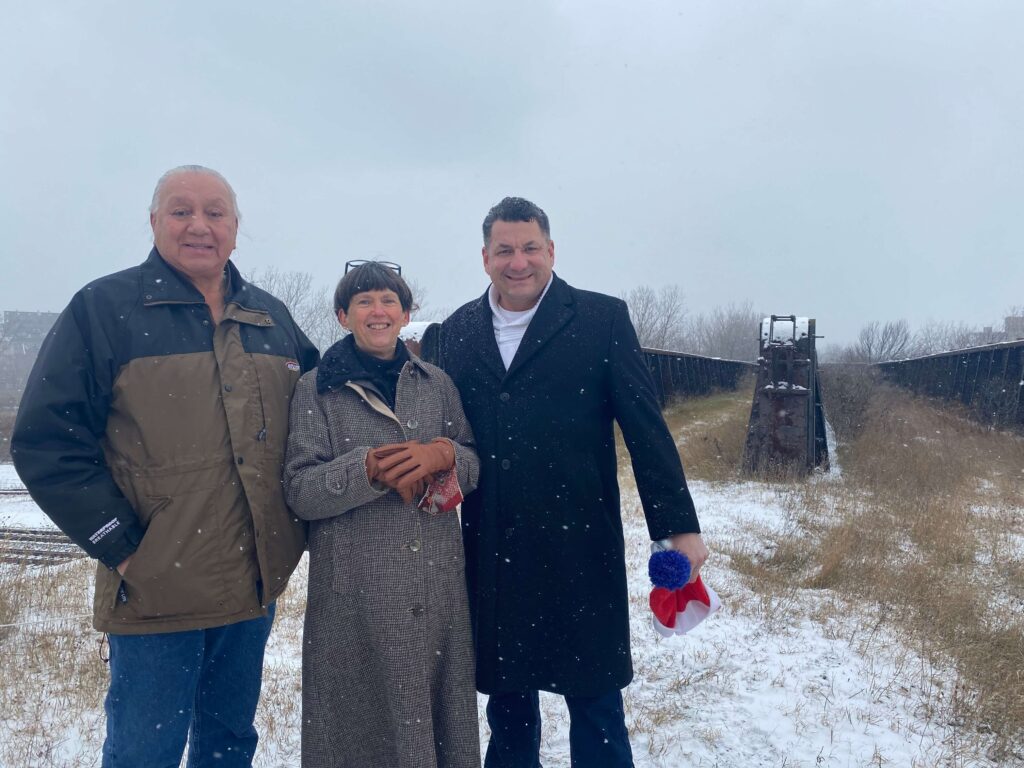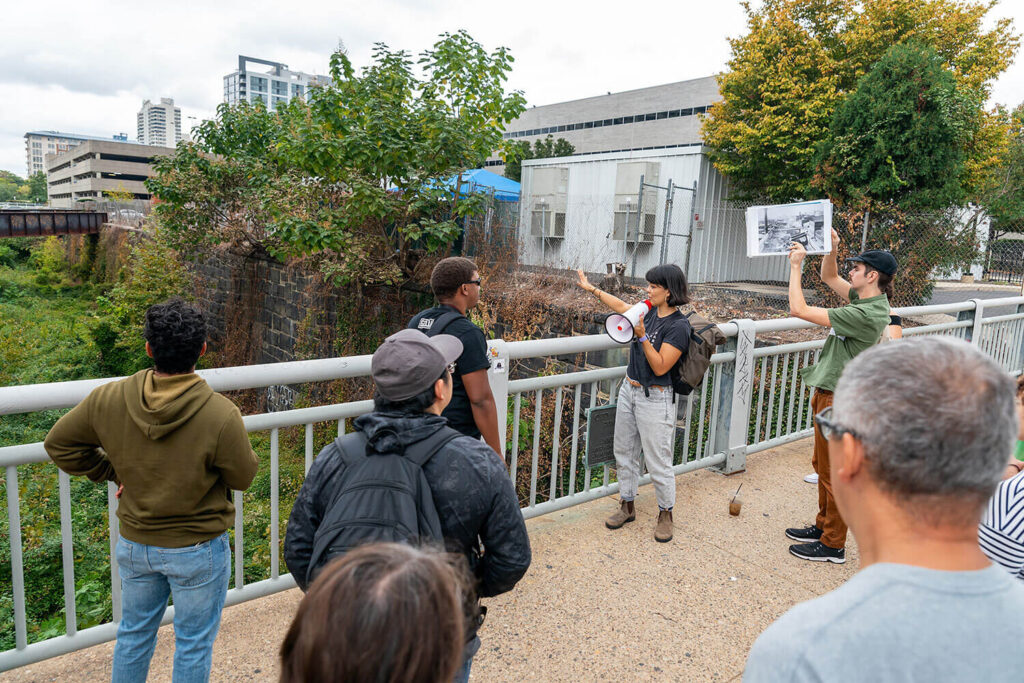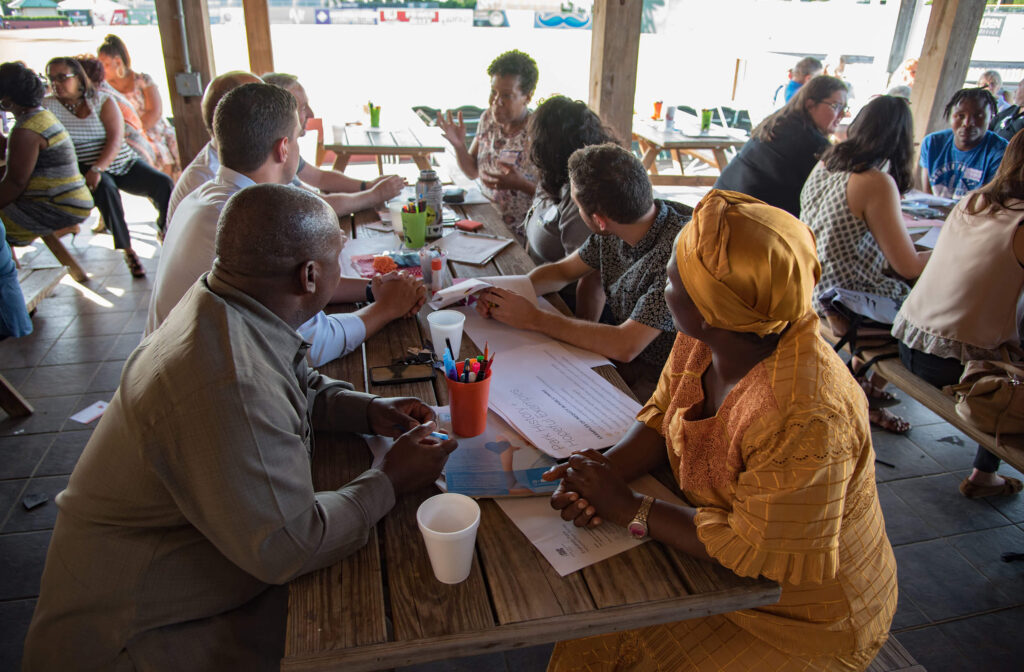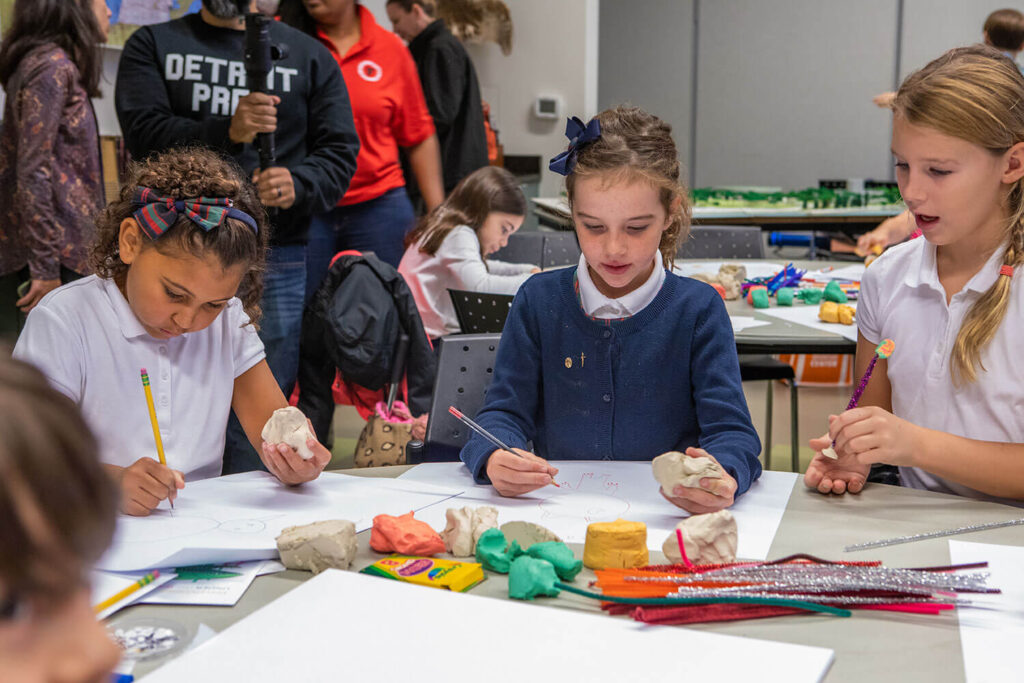Would you like to showcase your own work to embed equity in your infrastructure reuse project?
Listening Sessions Lead to Trust

Nancy Smith, Executive Director of the Western New York Land Conservancy, with Dennis Bowen, former President of the Seneca Nation, and Dean Seneca, CEO and Founder of Seneca Scientific Solutions. Credit: Western New York Land Conservancy.
Early in developing a vision and design for The Riverline, a Buffalo, New York nature trail, the Western New York Land Conservancy committed to centering the current residents of the surrounding communities. And they started with an approach that any organization, whatever the budget, can do: They listened.
The Riverline is located along the Buffalo River, on ancestral and unceded land of the Haudenosaunee Confederacy, in an area that was once Buffalo Creek Reservation. For centuries it was a place of refuge; a place where resources were rich for indigenous communities; and where the ground was fertile and water was abundant and pure. For the Land Conservancy’s first listening session, which was virtual, they invited attendance through outreach to Native American service providers, academics, tribal nation representatives, and people prominent in environmental movements. Land Conservancy leadership and the involved design firms were there to hear the community’s response to questions such as “What are your aspirations for this project?” and “What other resources should we explore and people would you recommend we develop relationships with?”
The engagement has prompted the Land Conservancy to center the design of The Riverline around the concept of creating a refuge and to explore ways to protect land important to the Haudenosaunee.
“As a next step in this process, the Land Conservancy focused its annual board and staff retreat around discussions with two local indigenous leaders who are Seneca Indians,” says Executive Director Nancy Smith. “It was important to respect the timeline and customs of the Nations represented, and to be flexible and adaptable where those were not immediately aligned with the assumed process and trajectory of the project.”
Project Org
Western New York Land Conservancy/The RiverlineRelated Toolkit Section
Examine HistoryRelated Tool
CONNECT THE DOTSEarly in developing a vision and design for The Riverline, a Buffalo, New York nature trail, the Western New York Land Conservancy committed to centering the current residents of the surrounding communities. And they started with an approach that any organization, whatever the budget, can do: They listened.
The Riverline is located along the Buffalo River, on ancestral and unceded land of the Haudenosaunee Confederacy, in an area that was once Buffalo Creek Reservation. For centuries it was a place of refuge; a place where resources were rich for indigenous communities; and where the ground was fertile and water was abundant and pure. For the Land Conservancy’s first listening session, which was virtual, they invited attendance through outreach to Native American service providers, academics, tribal nation representatives, and people prominent in environmental movements. Land Conservancy leadership and the involved design firms were there to hear the community’s response to questions such as “What are your aspirations for this project?” and “What other resources should we explore and people would you recommend we develop relationships with?”
The engagement has prompted the Land Conservancy to center the design of The Riverline around the concept of creating a refuge and to explore ways to protect land important to the Haudenosaunee.
“As a next step in this process, the Land Conservancy focused its annual board and staff retreat around discussions with two local indigenous leaders who are Seneca Indians,” says Executive Director Nancy Smith. “It was important to respect the timeline and customs of the Nations represented, and to be flexible and adaptable where those were not immediately aligned with the assumed process and trajectory of the project.”
Share this Case Study


